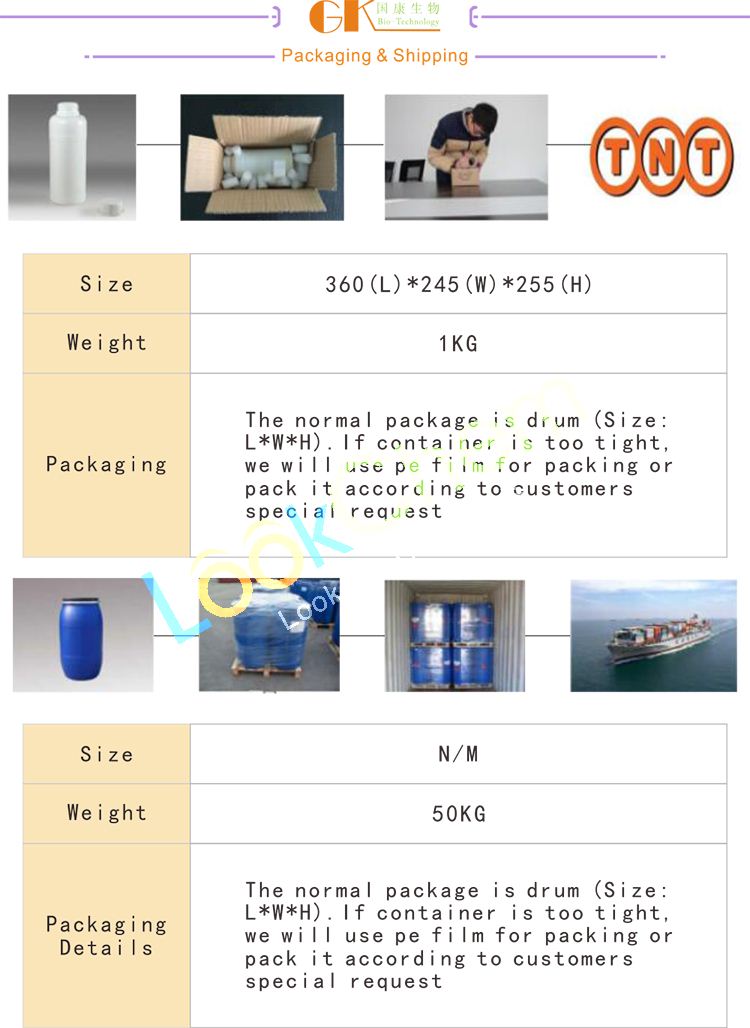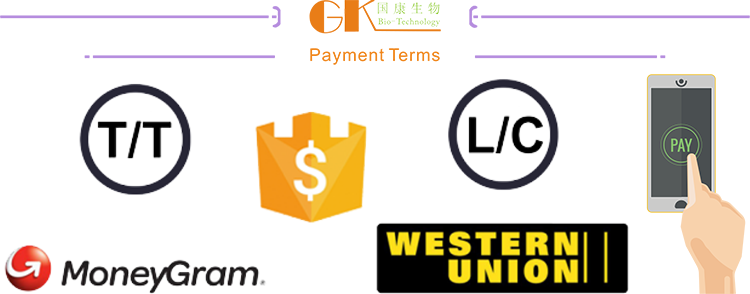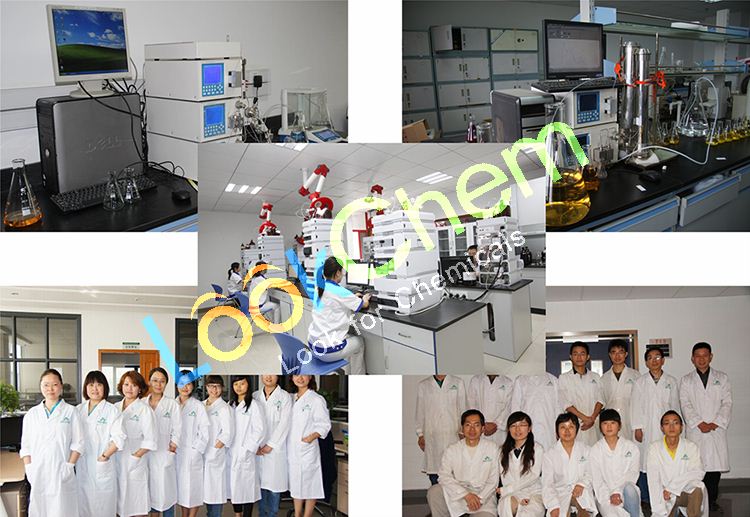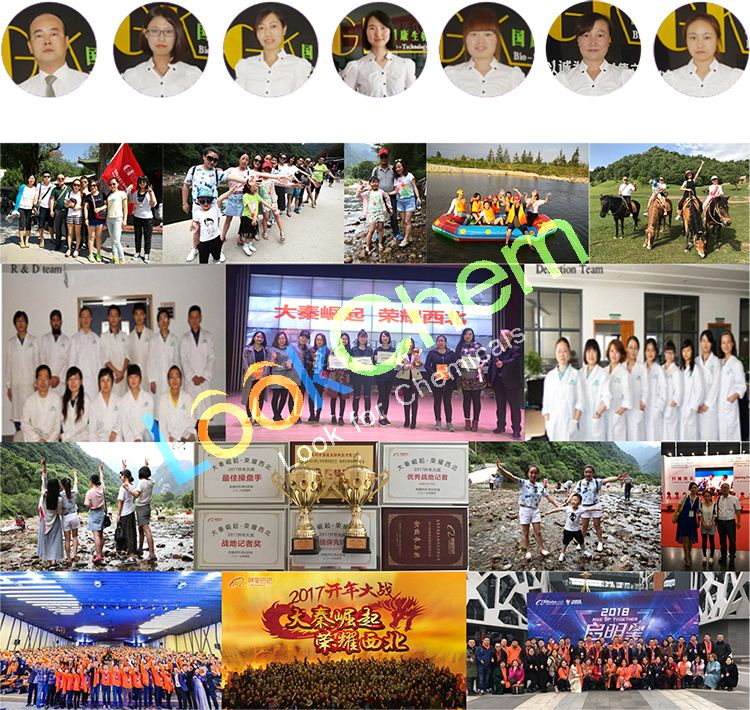Natural extract , Ginsenoside Rb1 CAS NO.41753-43-9
- FOB Price: USD: 280.00-300.00 /Kilogram Get Latest Price
- Min.Order: 1 Kilogram
- Payment Terms: L/C,D/A,D/P,T/T,
- Available Specifications:
98%(1-5)Kilogram98%(5-10)Kilogram
- Product Details
Keywords
- 41753-43-9
- Animal Pharmaceuticals
- Solvent Extraction
Quick Details
- ProName: Natural extract , Ginsenoside Rb1
- CasNo: 41753-43-9
- Molecular Formula: C54H92O23
- Appearance: White Powder
- Application: Anti-aging, Anti-knub, Resisting infla...
- DeliveryTime: Shipped in 15 days after payment
- PackAge: according to customers' requirements
- Port: China main port
- ProductionCapacity: 100 Kilogram/Month
- Purity: 98%
- Storage: 2 years
- Transportation: International express delivery
- LimitNum: 1 Kilogram
Superiority
About us
Our company has been in existence for 10 years since its establishment. We have our own unique team. The company integrates independent research and development, production and sales. We have established famous brands at home and abroad. At present, our customers have spread all over the world, we have rich Transportation experience, we aim to serve customers, to help customers, solve problems for customers. Look forward to working with you!
Details

Ginsenoside Rb1 is a kind of panaxadiol saponin, which belongs to dammarane triterpenoid saponins. It is mainly distributed in Panax ginseng, Panax notoginseng, American ginseng and other plants of Acanthopanax family. It has many pharmacological activities, such as anti-aging, anti cerebral ischemia injury, promoting peripheral nerve cell regeneration, improving learning and memory function, anti chemical Book tumor, hypoglycemia, improving sexual function, anti stress, etc It has good medicinal value in central nervous system, cardiovascular system, immune system, anti-tumor, anti liver warm ischemia-reperfusion, anti myocardial ischemia-reperfusion, anti lung ischemia-reperfusion and so on.
Functions:
1. The effect on the central nervous system (1) the intelligence promoting effect of ginsenoside Rb1 can promote learning and memory ability and cognitive ability. Alzheimer's disease (AD) is a primary degenerative brain disease with unknown etiology. The pharmacological effects of ginsenoside Rb1 on AD are as follows: increasing the content of acetylcholine in the brain, antagonizing calcium overload and inhibiting the over phosphorylation of tau protein. RB1 has a protective effect on the decrease of dopaminergic neurons induced by 1-methyl-4-phenylpyridinium-iodide (MPP +), but also can significantly protect the number of tyrosine hydroxylase immunoreactive (th -) neurites, and has a certain neurotrophic effect. RB1 can increase the content of acetylcholine in cortex and hippocampus and promote the release of acetylcholine, which has obvious facilitation and enhancement effect on learning and memory LTP. Dopamine is a monoamine transmitter, which can directly affect people's mood. RB1 can reduce the level of dopamine in the brain of mice and produce anti anxiety effect. RB1 can release excitatory glutamate in excess to complete the nutrition and protection of nerve cell injury. (2) The protective effect of RB1 can prevent the death of ischemic neurons caused by transient cerebral ischemia. Its mechanism is related to increasing the expression of anti apoptotic genes, reducing the generation of Pro apoptotic genes, and regulating the expression of glial cell-derived neurotrophic factor (GDNF). (3) RB1 can promote the proliferation of Schwann cells and promote the expression and secretion of nerve growth factor (NGF) and BDNF through PKA pathway of Schwann cells. At the same time, RB1 can promote the proliferation and differentiation of Schwann cells in vitro, which is helpful to the regeneration of injured nerve. RB1 can also block Ca2 + overload in neurons, play a neuroprotective role, and promote the repair of neurons after ischemia. RB1 can also prevent hearing loss caused by the damage of spiral ganglion (SGCs) after cochlear cell ischemia in Mongolian gerbil, and protect SGCs after cochlear cell ischemia.
2. Effects on cardiovascular system (1) myocardial protection myocardial ischemia-reperfusion can induce cardiomyocyte apoptosis, the main mechanism of which is the increase of oxygen free radicals and intracellular calcium concentration. However, no showed a variety of moderate inhibitory effects on myocardial protection under physiological and pathological conditions. RB1 can enhance the expression of eNOS, increase the content of no and inhibit oxidative stress, reduce the myocardial ischemia-reperfusion injury in diabetic rats, and the protective effect is mediated to some extent by activating PI3K pathway and Akt phosphorylation. (2) Effect of ginsenoside Rb1 on apoptosis of myocardial cells after ischemia-reperfusion. The protective effect of Rb1 on hypoxia reoxygenation (H / R) injury of cardiomyocytes. RB1 can significantly reduce the H / R injury of hypertrophic cardiomyocytes, and its mechanism is related to the inhibition of apoptosis, the reduction of lipid peroxidation, the release of lactate dehydrogenase (LDH), and the enhancement of no activity. In addition, ginsenoside Rb1 can also prevent the apoptosis of neonatal rat cardiomyocytes induced by cobalt chloride. The translocation and expression of glucose uptake chemical book and glucose transporter-4 play a key role in its anti apoptotic effect. (3) The effect of ginsenoside Rb1 on vascular endothelial cells can inhibit the intimal hyperplasia induced by homocysteine and weaken the degree of intimal hyperplasia. 3. The effect of cytokines on the immune system is closely related to immune diseases. CD4 + T lymphocytes are in the precursor state under normal condition, and further differentiate into Th1 and Th2 under the effect of different cytokines. The former mediates cellular immunity, the latter mediates conductor liquid immunity. Under normal circumstances, Th1 and Th2 inhibit each other and are in a dynamic equilibrium state, maintaining the normal cellular and humoral immune functions of the body. The vaccine containing RB1 component can improve the expression of IL-4 and IL-10 cytokines in serum, and the immune lymphocytes still produce a lot of cytokines such as IFN - γ, IL-2, IL-4, IL-10 and TNF - α after 5 weeks of injection. Therefore, RB1 plays an important role in the immune balance of Th1 and Th2.
4. Ginsenoside Rb1 can prevent the liver from thermal ischemia-reperfusion injury. RB1 can prevent liver ischemia-reperfusion injury. RB1 has the potential to treat liver warm ischemia-reperfusion through ros-no-hif pathway. 5. Anti-tumor effect ginsenoside Rb1 can effectively inhibit angiogenesis in vivo and in vitro. The mechanism may be that estrogen receptor B modulates the formation of pigmented epithelial derived factors to inhibit the formation of tubular structure, thus having the effect of anticancer and antiangiogenesis. 6. Effect on diabetes the antidiabetic and insulin sensitizing effects of RB1 may be partly achieved by regulating the development and function of adipocytes. When 3T3-L1 adipocytes were treated with Rb1, basal glucose and insulin-mediated glucose uptake increased significantly, and the mRNA and protein levels of glucose transporter 4 increased. RB1 also inhibited the proliferation of 3T3-L1 preadipocytes. In addition, rbchemical Book1 can also activate the insulin signal transduction pathway, promote the translocation of glucose transporter 1 and glucose transporter 4, stimulate the glucose transport of insulin sensitive cells, and thus reduce blood glucose. Fibronectin may be a target protein of diabetic nephropathy. Ginsenoside Rb1 can prevent the increase of fibronectin expression induced by high glucose by inhibiting the amplification of MAPK Akt signal cascade, so as to reduce diabetic complications. 7. Ginsenoside Rb1 can improve sexual function. Ginsenoside Rb1 has a weak phytoestrogenic effect. It plays a role by binding and activating estrogen receptor, which is dependent on estrogen receptor. 8. Other protective effects on lipopolysaccharide induced mesenteric microcirculation disturbance, promoting burn repair, inhibiting the activity of cyclooxygenase promoter induced by terephthalic acid (TPA), resisting skin photoaging and anti ulcer.













 Premiumsupplier
Premiumsupplier 



